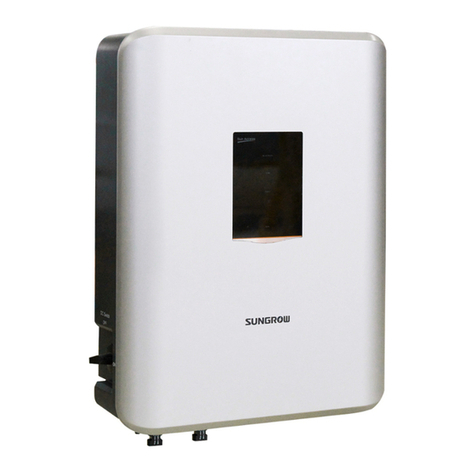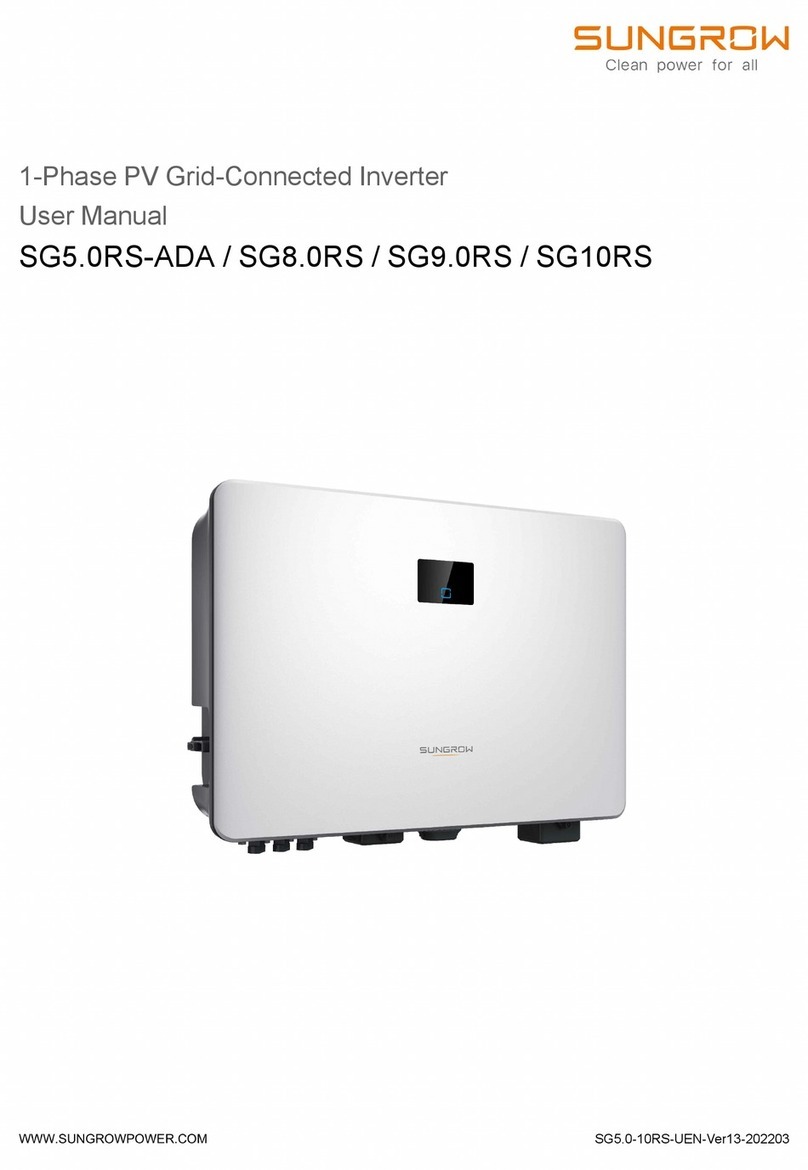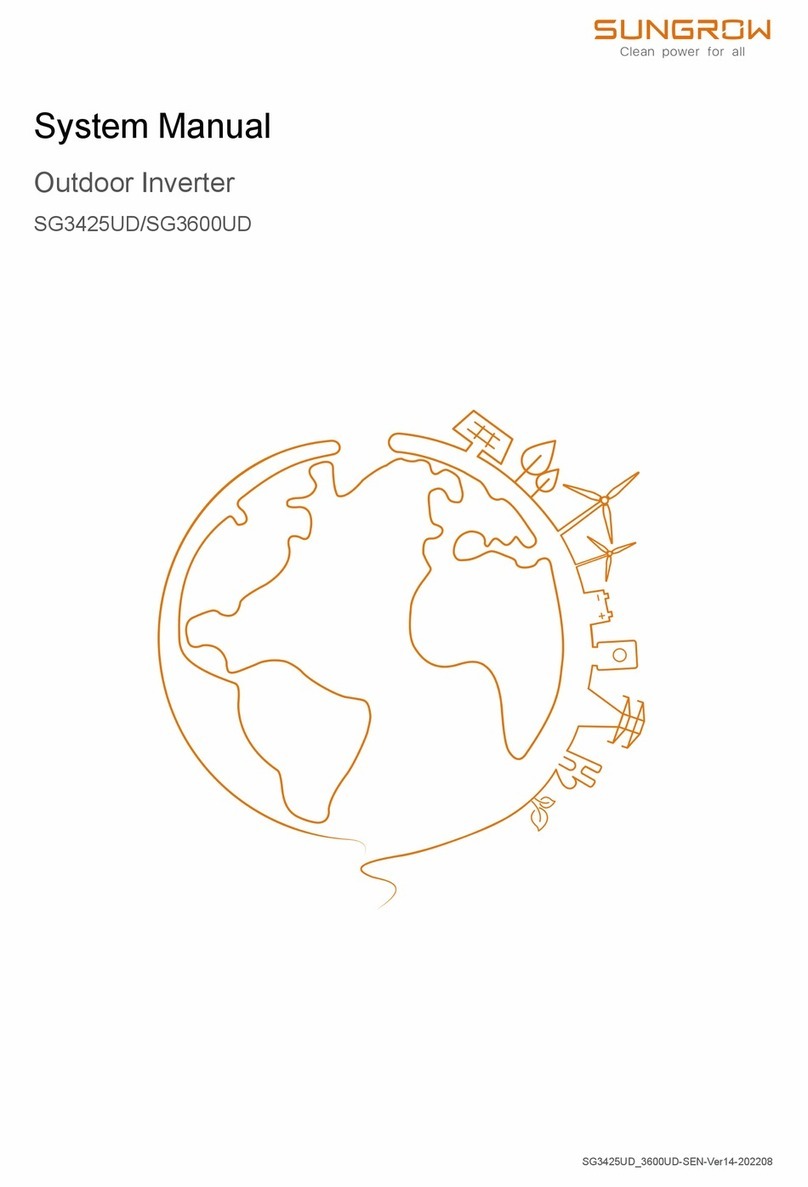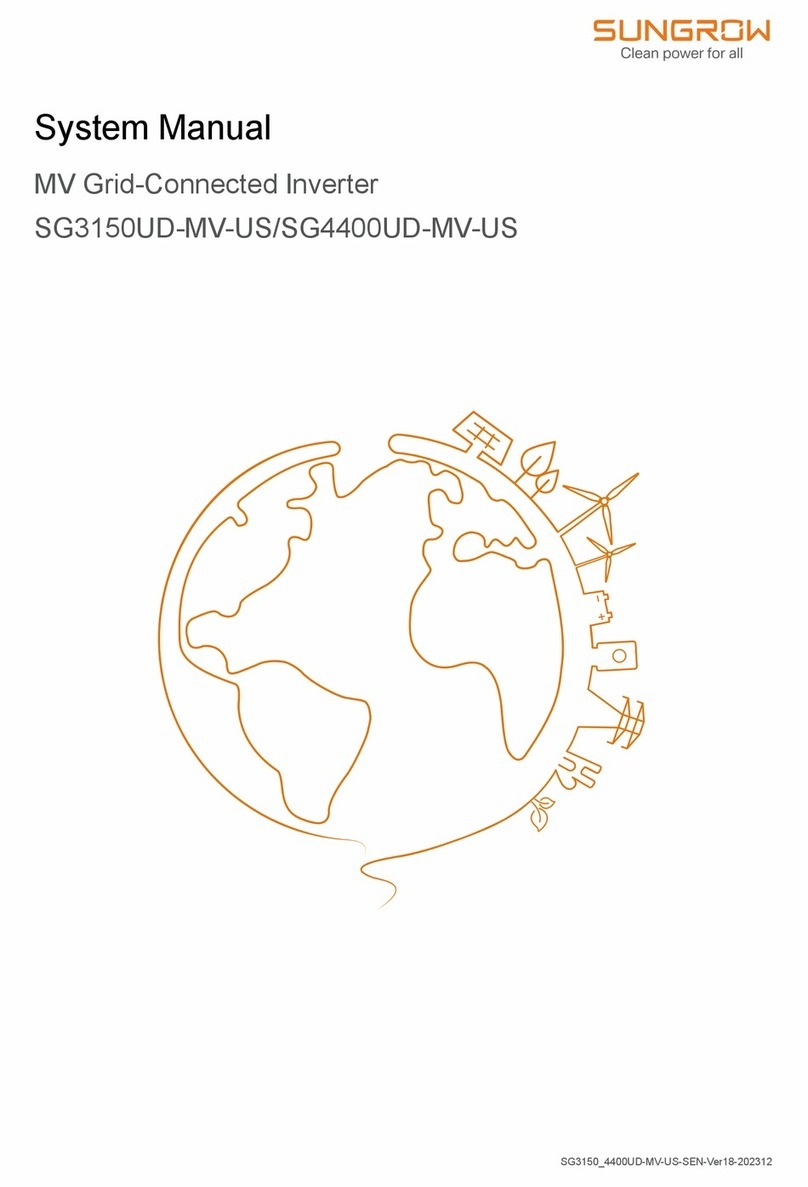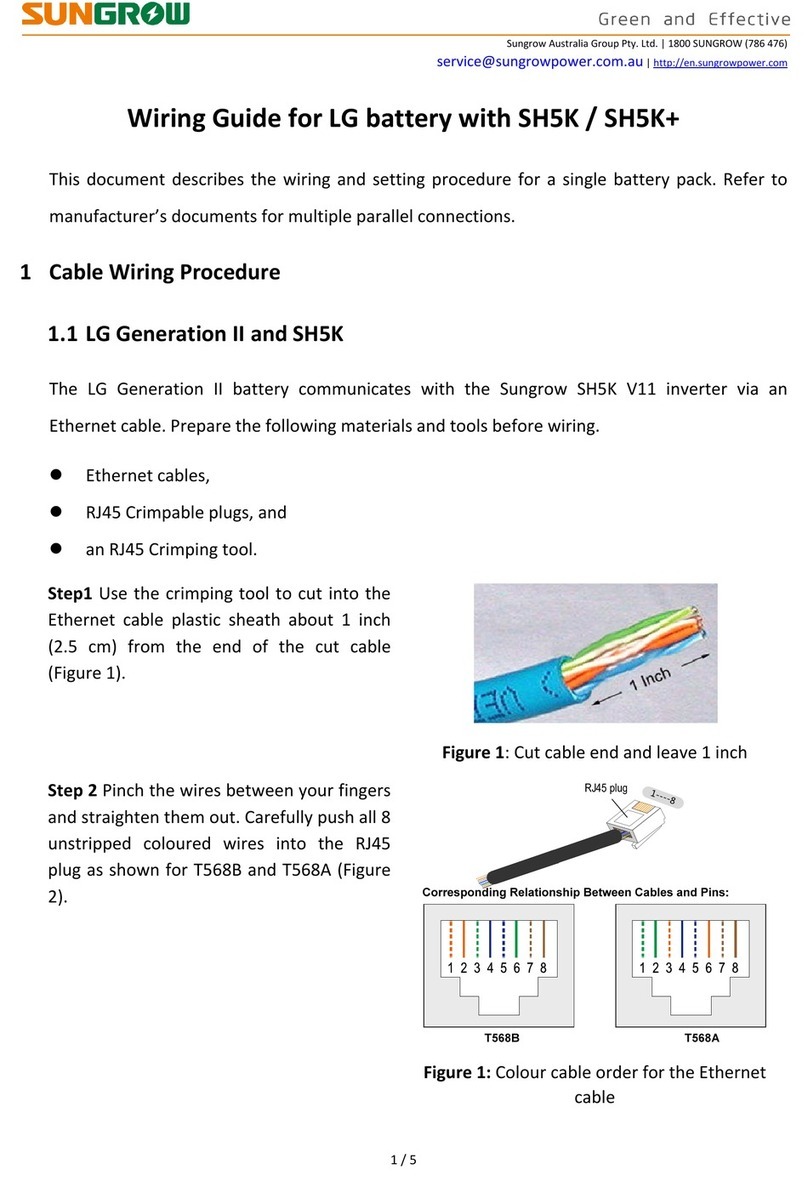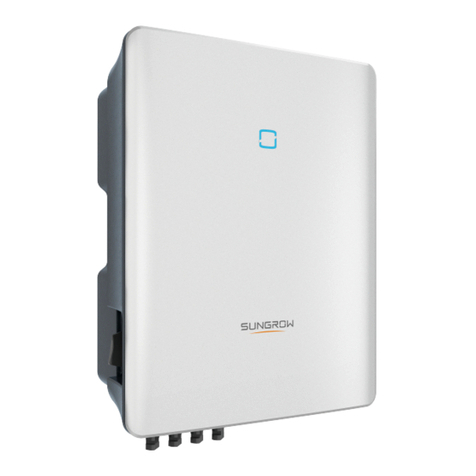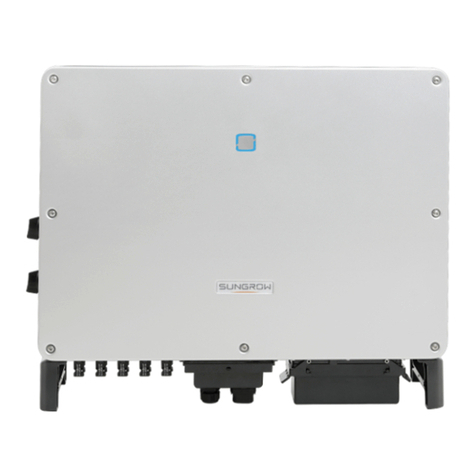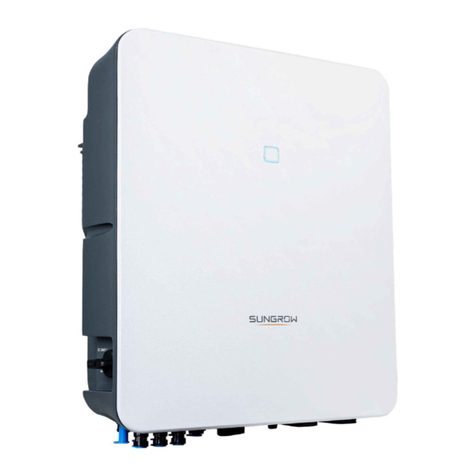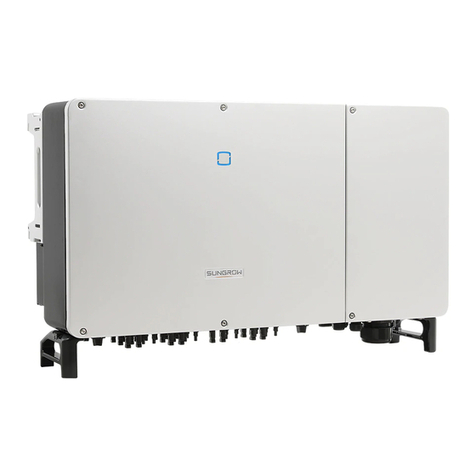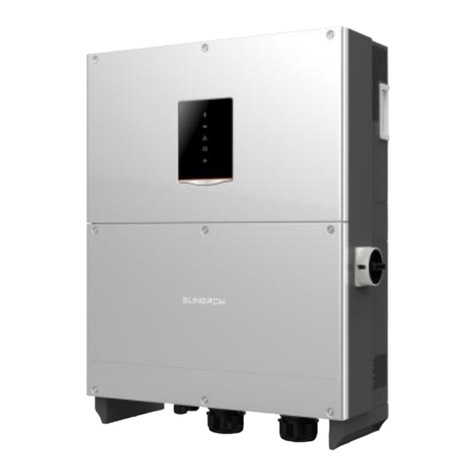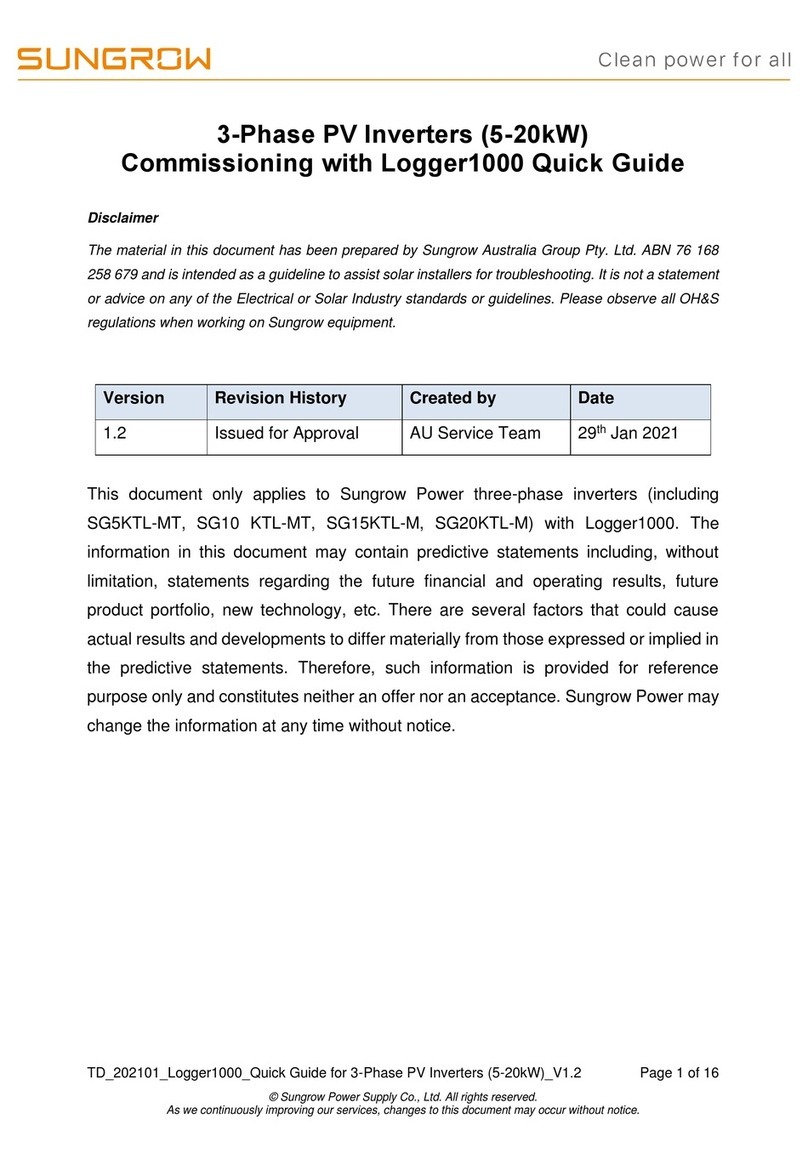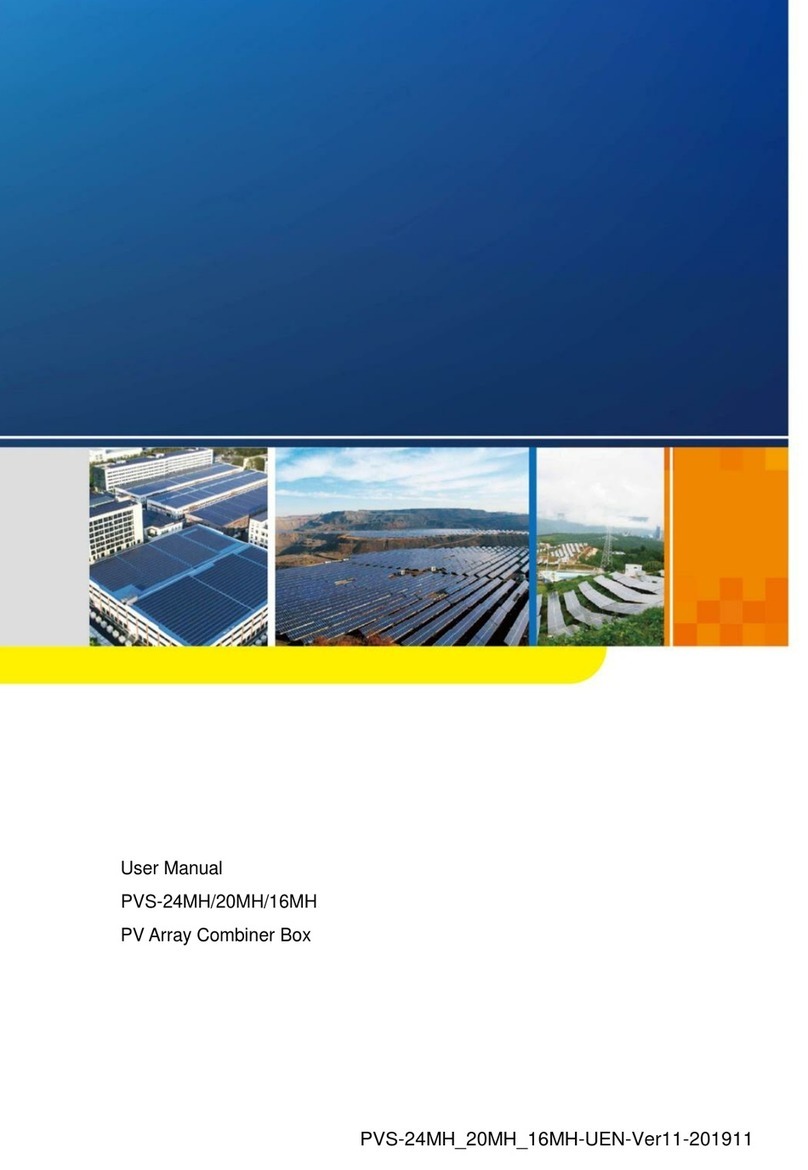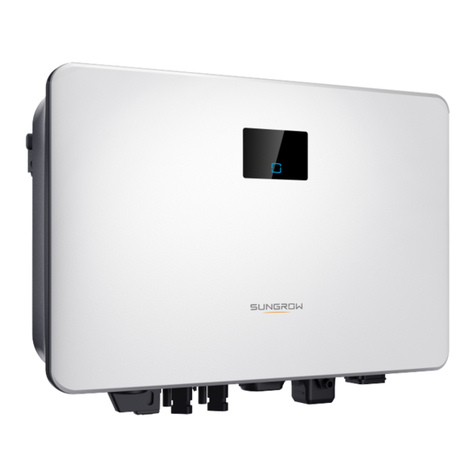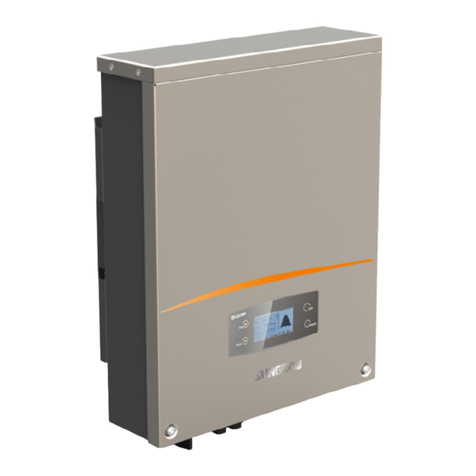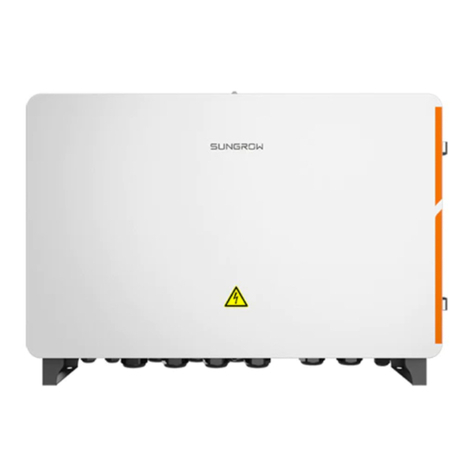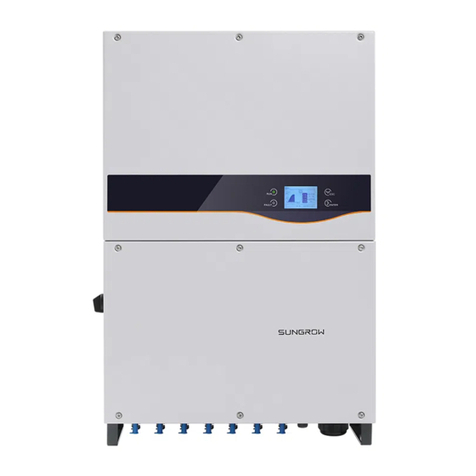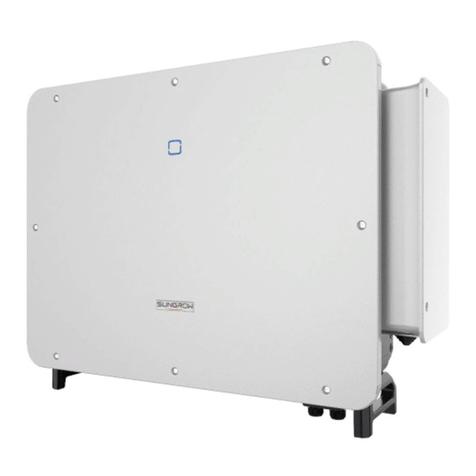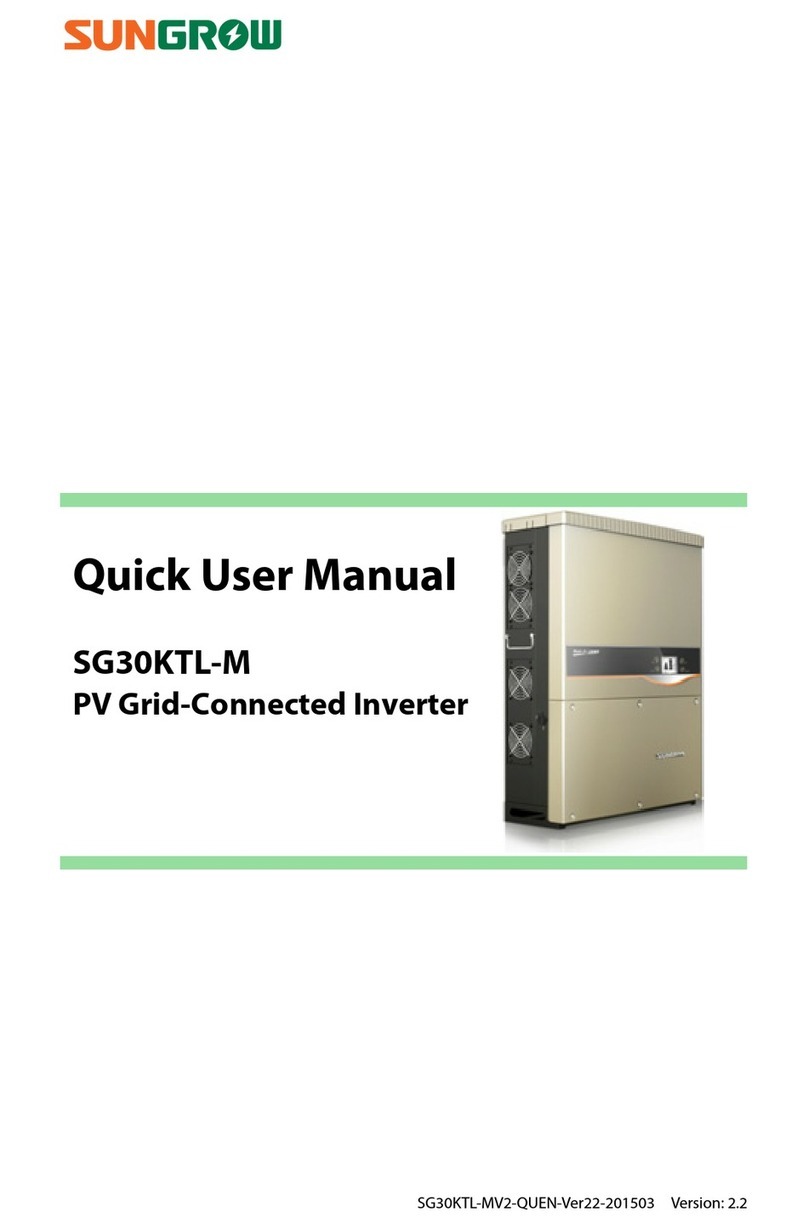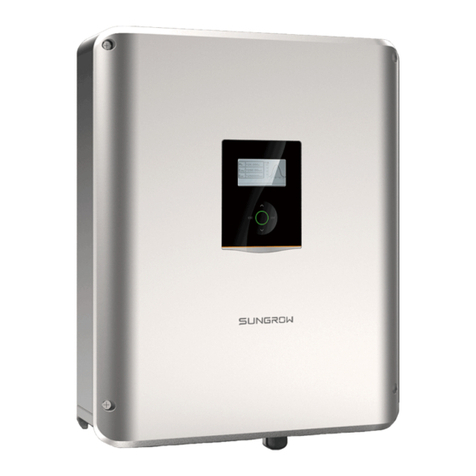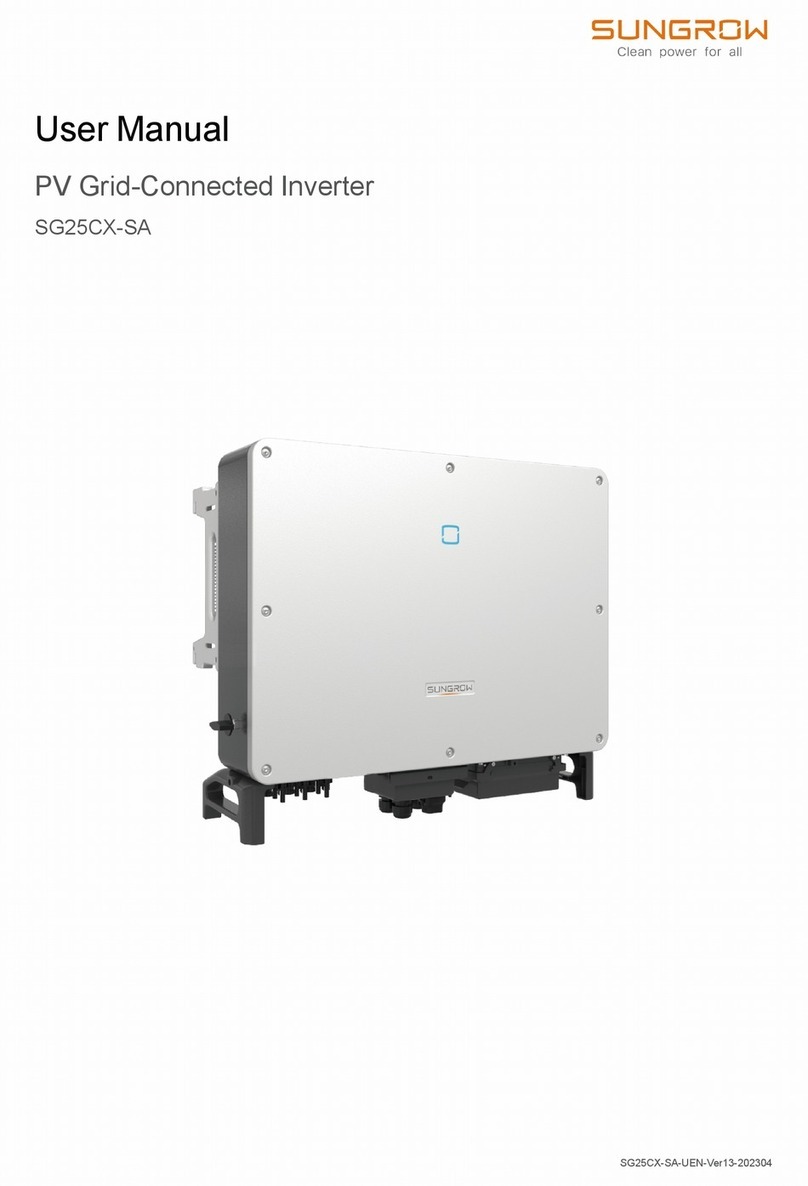
VI
4.4.1 Manual Transport ............................................................................. 19
4.4.2 Hoisting Transport ............................................................................ 19
4.5 Dimensions of mounting-bracket................................................................ 20
4.6 PV Bracket-Mounted Installation................................................................. 21
4.6.1 Preparation before Mounting ............................................................ 21
4.6.2 Mounting Steps ................................................................................ 21
4.7 Wall-Mounted Installation........................................................................... 23
4.7.1 Preparation before Mounting ............................................................ 23
4.7.2 Mounting Steps ................................................................................ 23
5 Electrical Connection ............................................................................... 26
5.1 Safety Instructions...................................................................................... 26
5.2 Terminal Description................................................................................... 26
5.3 Electrical Connection Overview .................................................................. 28
5.4 Additional Grounding Connection ............................................................... 30
5.4.1 Additional Grounding Requirements.................................................. 30
5.4.2 Connection Procedure...................................................................... 30
5.5 Opening the Wiring Compartment .............................................................. 31
5.6 AC Cable Connection ................................................................................. 32
5.6.1 AC Side Requirements...................................................................... 32
5.6.2 Requirements for OT/DT Terminal ..................................................... 34
5.6.3 Aluminium Cable Requirements ........................................................ 35
5.6.4 Connection Procedure...................................................................... 35
5.7 DC Cable Connection................................................................................. 38
5.7.1 PV Input Configuration...................................................................... 39
5.7.2 Connection Procedure...................................................................... 40
5.7.3 Installing the PV Connectors ............................................................. 41
5.8 Wiring of Tracking System Power Cable (Optional) ..................................... 42
5.9 RS485 Communication .............................................................................. 45
5.9.1 Interface Description......................................................................... 45
5.9.2 RS485 Communication System ........................................................ 46
5.9.3 Connection Procedure(Terminal Block) ............................................. 48
5.10 PLC Communication Connection.............................................................. 50
5.11 Dry Contact Connection ........................................................................... 50
5.11.1 Dry Contact Function...................................................................... 50
5.11.2 Wiring Procedure............................................................................ 52
5.12 Closing the Wiring Compartment .............................................................. 52
